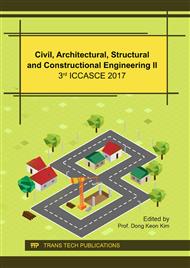p.135
p.140
p.146
p.152
p.159
p.166
p.173
p.179
p.183
The Analysis of the Slow-Traffic and Lingering Space System of the Bridges and both Banks - Taking the Estuary Area of Suzhou Creek in Shanghai as an Example
Abstract:
It is necessary to construct the slow-traffic and lingering space system of the bridges and both banks in the motorized era. It’s the main part of the city planning for non-motorized travel. Also, it’s important for the development of the cross-river slow-traffic system and the comprehensive development of bridges and both banks. We investigate and analyze the traffic volume, lingering activities and cross-river walking path in the estuary area of Suzhou Creek. And we found three things. Firstly, the cross-river slow-traffic and lingering space is not smooth and attractive. Secondly, the riverside slow-traffic and lingering space is not continuous and extensive. Thirdly, the bridge slow-traffic and lingering space is not safe and comfortable. Based on these, some optimizing strategies are proposed. For example, it is recommended to construct the continuous cross-river slow-traffic network, to establish the both-bank lingering space system around the center of river, and to build bridges with slow-traffic and lingering functions.
Info:
Periodical:
Pages:
159-165
Citation:
Online since:
February 2018
Authors:
Keywords:
Price:
Сopyright:
© 2018 Trans Tech Publications Ltd. All Rights Reserved
Share:
Citation:


